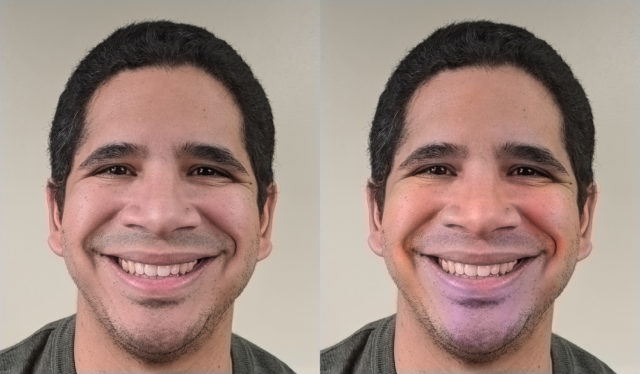Expressions such as “blue in the face”, “green around the gills” and “blushing bride” may be more than colourful descriptions.
New research suggests that subtle changes in facial skin colour speak volumes about our emotions.
And even though they may be too faint to register consciously, they flag up the feelings of others to aid social communication.

Study participants asked to “read” the emotions of neutral faces in photographs guessed correctly 75% of the time, guided only by superimposed colour patterns.
Based on the findings, scientists developed computer programmes that could identify human emotions from facial colouring with 90% accuracy.
In future, the algorithms could lead to sensitive artificially intelligent robots that respond to and mimic human emotions.
Lead researcher Professor Aleix Martinez, from Ohio State University in the US, said: “We identified patterns of facial colouring that are unique to every emotion we studied.
“We believe these colour patterns are due to subtle changes in blood flow or blood composition triggered by the central nervous system. Not only do we perceive these changes in facial colour, but we use them to correctly identify how other people are feeling, whether we do it consciously or not.”
The colour changes are not as simple as being red in the face with anger.
They involve subtle differences in hue in different regions of the face.
The “yuk” emotion known as “disgust” – one of the most powerful – creates a blue-yellow colouration around the lips with red-green surrounding the nose and forehead. Coincidentally or not, the expression “green around the gills” is used to describe someone feeling nauseous.
Red cheeks and temples with a little blue around the chin signal happiness. But the same face with a slightly redder forehead and a less blue chin is perceived as “surprised”.
The scientists, who report their findings in the journal Proceedings of the National Academy of Scientists, showed that just about every human emotion was characterised by touches of red, green, blue and yellow in different amounts and locations on the face.
“There’s a little bit of colour everywhere,” said Prof Martinez.
In one experiment the researchers superimposed different emotional colour patterns on photos of faces with neutral expressions.
These were then shown to 20 volunteers who were given a choice of 18 emotions and asked to guess how the person in the picture was feeling. The emotions included basic ones such as “happy” and “sad” and more complex combinations including “sadly angry” and “happily surprised”.
Neutral faces colourised to look happy were identified as happy about 70% of the time. Faces coloured “sad” were spotted with 75% accuracy and those coloured “angry” with a 65% success rate.
The volunteers also found it easy to see through a ruse that involved “angry” colours being placed on happy faces and other mix-ups.
“Participants could clearly identify which images had the congruent versus the incongruent colours,” said Prof Martinez.
The computer software proved even better than human volunteers at detecting emotions via face colour. Its success record was 90% for happiness, 80% for anger, 75% for sadness and 70% for fear.
With their hairless faces, humans may be unique among primates for their ability to signal emotion through facial colour, said the scientists.
Cosmetics may even play an unconscious role in transmitting information about our emotions by altering facial colouration, Prof Martinez believes.
He said: “People have always said that we use makeup to look beautiful or younger, but I think that it is possible that we actually do it to appear happier or create a positive perception of emotion – or a negative perception, if you wanted to do that.”